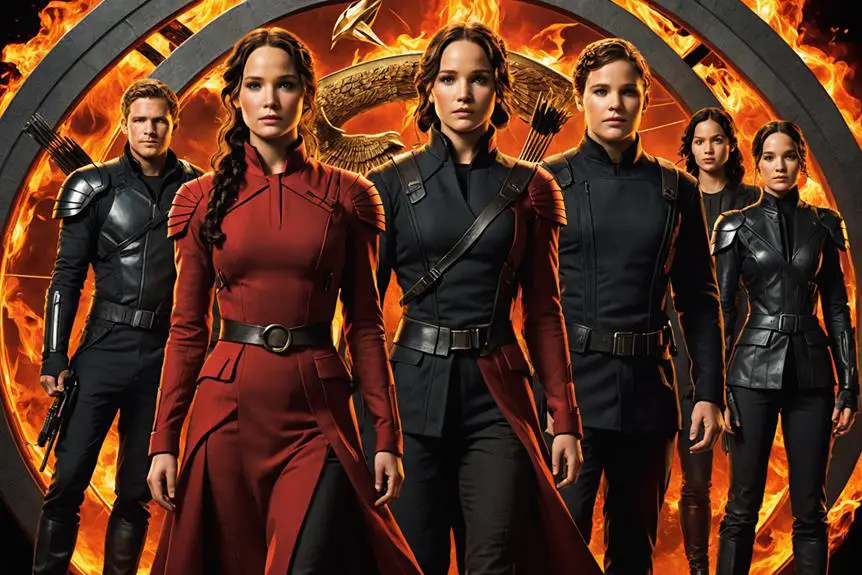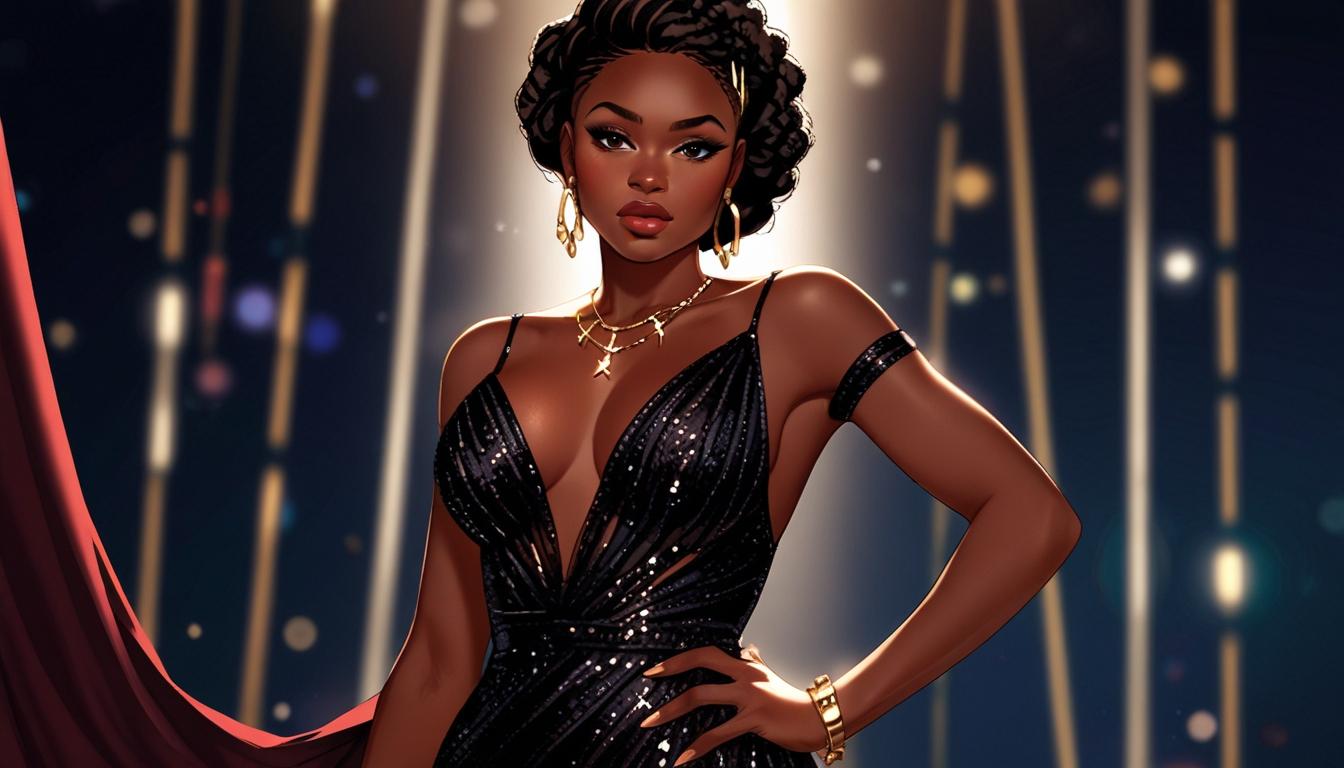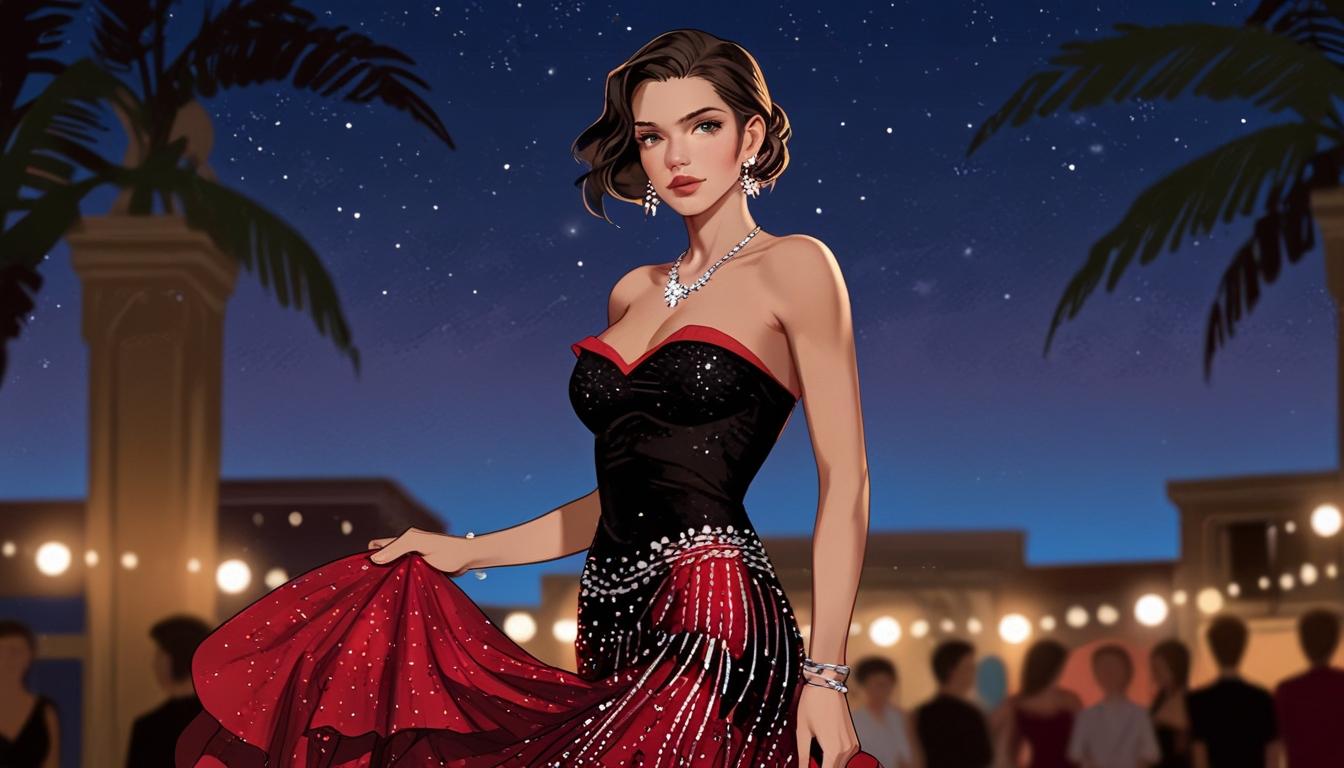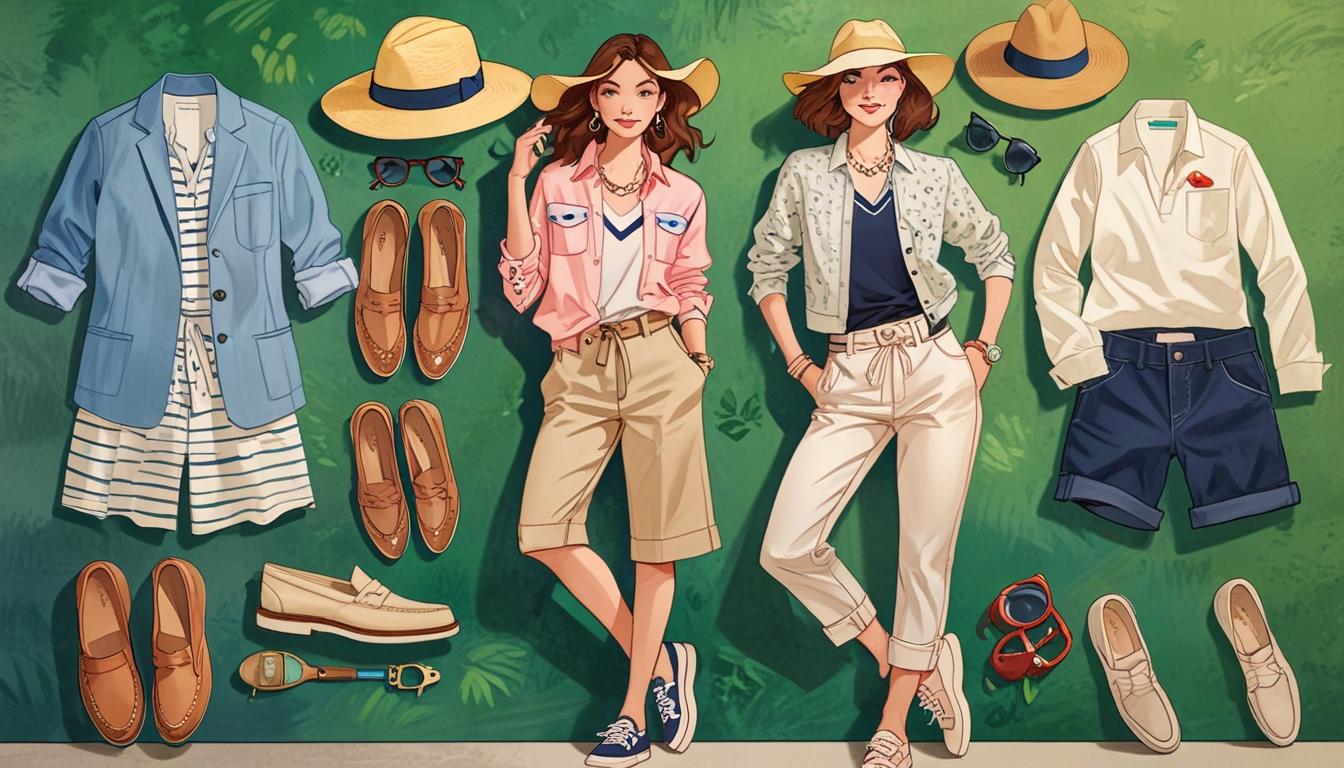Imagine standing before a canvas where each brushstroke reveals the stark contrasts of a dystopian world; that's what the costumes in *The Hunger Games* series achieve. From the opulent chariot ensembles that scream Capitol excess to the rugged survival gear worn by tributes, every outfit tells a story of identity and rebellion. These designs not only enhance character arcs but also reflect the socio-economic divides within Panem. What do these visual choices reveal about the underlying themes of power and resistance? Exploring this could change your perception of the entire series.
Costume Design Overview
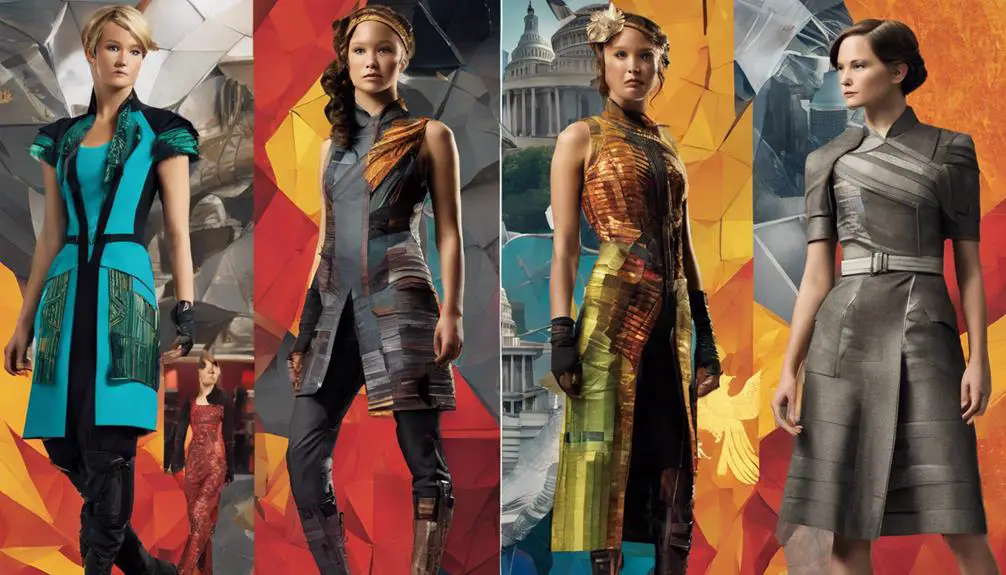
The costume design for *The Hunger Games* series showcases the creative talents of several designers, each bringing their unique vision to the films. Judianna Makovsky set the tone with her stunning work in the first film, where over 200 distinct costumes brought characters like Katniss and Effie to life. Katniss's chariot outfits and practical arena wear, featuring olive cargo pants and hooded jackets, perfectly captured her resourcefulness and resilience.
In *Catching Fire*, Trish Summerville took the reins, infusing the District 12 costumes with a gritty 1950s coal mining aesthetic. This choice starkly contrasted the opulence of the Capitol, where flamboyant costumes reflected the excess and eccentricity of its citizens. Effie's vibrant, extravagant outfits made her a standout among the Capitol crowd, symbolizing the disconnection between the wealthy and the impoverished Districts.
As the series progressed into *Mockingjay*, Christian Cordella's designs emphasized a more militaristic approach. Collaborating with Aitor Throup, he created combat uniforms that mirrored the rebellion's focus on survival, showcasing how costume design can evolve alongside the narrative. Each piece not only enhances character development but also serves as a powerful critique of the society depicted in the films.
From the Capitol's over-the-top fashion to the stark practicality of the Districts, the costume design throughout *The Hunger Games* series plays a pivotal role in storytelling, inviting you to immerse yourself in a world where every stitch tells a story.
Iconic Chariot Costumes
Stepping into the spotlight during the Tribute Parade, the iconic chariot costumes in *The Hunger Games* instantly grab your attention with their dramatic flair. Designed by the talented Judianna Makovsky, these costumes embody the essence of Capitol fashion while highlighting the stark contrasts with the Districts. Katniss and Peeta's fiery outfits, featuring black leather jumpsuits adorned with flames, symbolize rebellion and captivate the audience's gaze, effectively showcasing their unique personas.
Each District's chariot costumes reflect their struggles and identities; for instance, District 12's outfits incorporate coal mining aesthetics and practical elements, emphasizing their tough reality. This costume design not only provides visual impact but also serves a significant narrative purpose. The striking imagery generates critical attention from sponsors, setting the stage for the tributes' journey into the brutal arena.
The chariot costumes play a significant role in illustrating the socio-political divides within Panem. The opulence of Capitol fashion sharply contrasts with the utilitarian styles of the Districts, underscoring the disparities that fuel the rebellion. As you watch the Tribute Parade unfold, it becomes clear that these costumes aren't just clothing; they represent a powerful statement about identity, struggle, and the fight against oppression.
In the Hunger Games, the chariot costumes create memorable moments that resonate with viewers, embodying both the spirit of the characters and the larger narrative of resistance. It's an unforgettable showcase of creativity and storytelling that leaves a lasting impression.
Reaping Day Outfits
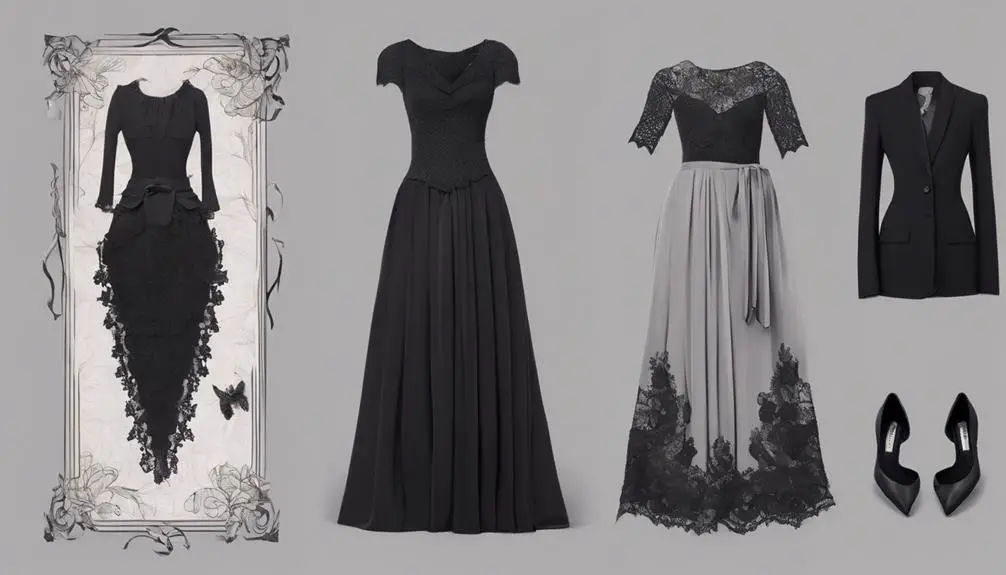
Reaping Day outfits starkly illustrate the divide between the Capitol's extravagant fashion and the Districts' practical attire. In "The Hunger Games," this contrast is not just a visual choice but a poignant commentary on socioeconomic status. Katniss Everdeen, representing District 12, dons a simple, functional dress that highlights her humble background and deep-rooted familial ties. Her understated attire reflects her reluctance to participate in the Hunger Games, emphasizing resilience amidst despair.
On the other hand, Effie Trinket, the Capitol's escort, embodies opulence in her vibrant pink suit. Her eye-catching ensemble symbolizes the Capitol citizens' excess and their blatant ignorance of the struggles faced by District residents. The Reaping Day outfits serve to reinforce character identities, with Katniss's muted colors and practical design juxtaposed against Effie's flamboyant style, underscoring the moral detachment of the Capitol.
Fashion and costume design play a significant role in storytelling, as the Reaping Day outfits not only establish the somber tone of this pivotal event but also highlight the stark realities of life in Panem. The muted colors and practical designs worn by District citizens convey the gravity of the occasion, while the Capitol's extravagant attire starkly contrasts their carefree lives. This striking visual storytelling enriches your understanding of the characters and their circumstances, showcasing how attire reflects one's place within society. Overall, Reaping Day outfits brilliantly encapsulate the stark disparities that define the world of "The Hunger Games."
Arena Survival Wear
Arena survival wear for tributes is crafted for durability and practicality, reflecting the brutal realities they face in combat. In the Hunger Games, every detail of these arena outfits is designed to maximize survival chances, emphasizing functionality over style. You'll notice that tributes sport olive cargo pants, hooded jackets, and sturdy boots, all tailored for mobility and protection. These choices are crucial, as they must navigate the treacherous environment while evading opponents.
Katniss Everdeen, the iconic protagonist, stands out in her signature black leather jacket, which symbolizes her resourcefulness and connection to her father's legacy as a skilled hunter. This leather jacket is not just stylish; it's a critical part of her survival wear, designed to withstand the harsh conditions of the arena. The muted colors of the clothing help tributes blend into their surroundings, increasing their chances of stealth and survival during the brutal competition.
The materials chosen for arena survival wear prioritize comfort and durability, allowing you to stay agile without the hindrance of cumbersome clothing. Whether it's dodging traps or climbing trees, every piece is strategically selected to keep tributes one step ahead in the fight for survival. Fundamentally, arena survival wear encapsulates the spirit of the Hunger Games—where every decision, every outfit choice, can mean the difference between life and death. So next time you watch the films, pay close attention to the outfits; they're a reflection of the strength and resilience of the tributes!
Victor Crowning Attire
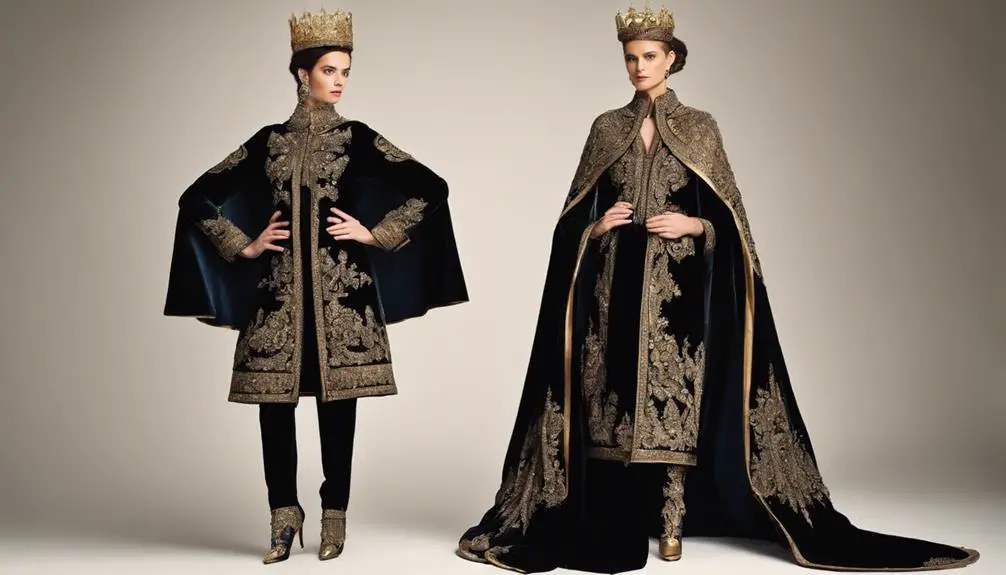
After surviving the brutal challenges of the arena, victors find themselves thrust into the spotlight with outfits that reflect the Capitol's extravagant culture. The victor crowning attire in "The Hunger Games" series captures this essence, featuring extravagant gowns and suits that celebrate the victors while simultaneously showcasing the Capitol's oppressive nature.
In "Catching Fire," Katniss's victor gown stands out as a stunning representation of her transformation. Its flowing design not only symbolizes her newfound status but also mirrors the Capitol's obsession with spectacle and theatricality. Peeta's victor attire complements this celebration, enhanced by unique accessories that elevate his charismatic image, perfectly aligning with the Capitol's expectation for victors to be both entertainers and symbols of hope.
Effie Trinket, with her vibrant and colorful outfits, embodies the Capitol's flamboyant fashion during these crowning events. The extravagant gowns she wears highlight her role as a representative of the Capitol's superficial values, making her an unforgettable presence at every ceremony.
The costuming for these moments integrates high fashion and theatricality, creating a sense of grandeur and excess that sharply contrasts with the harsh realities faced by the districts. Each piece is meticulously crafted, transforming the victors into icons of the Capitol's culture, while also reminding audiences of the dark undertones of their fame. Overall, the Hunger Games costumes during the victor crowning ceremonies are a reflection of the complex interplay between celebration and oppression in this dystopian world.
Makeup and Character Transformations
In the world of "The Hunger Games," makeup plays an essential role in character transformations, vividly illustrating each tribute's journey and emotional state. The lead makeup designer, Sherri Berman Laurence, drew inspiration from the 1940s and 1950s, resulting in diverse looks that range from gritty to glamorous. For the tributes, techniques like dirt, grime, and blood effects enhance authenticity, reflecting their struggles and victories in the arena.
Take Katniss Everdeen, for instance. Her makeup choices evolve throughout the series; vibrant colors in her performance looks symbolize her growing rebellion against the Capitol. Each shade tells a story, showcasing her progression from a scared girl to a fierce leader. Similarly, Tigris Snow's character design incorporates a fashion-forward style that underscores her empathetic nature, contrasting sharply with the Capitol's excess.
Special effects makeup techniques, such as eyebrow shaping and colored contacts, were essential in creating striking character designs. These elements visually communicate each character's role and personality, making them unforgettable. A standout is Dr. Volumnia Gaul, whose heterochromia and distinctive old-age makeup emphasize her complex persona and backstory, crafted by Tamar Aviv.
Ultimately, makeup transcends mere aesthetics in "The Hunger Games"; it serves as a powerful storytelling tool that deepens our understanding of the tributes and their emotional states, enhancing the cinematic experience and engaging viewers in the characters' struggles and triumphs.
Thematic Visual Aesthetics
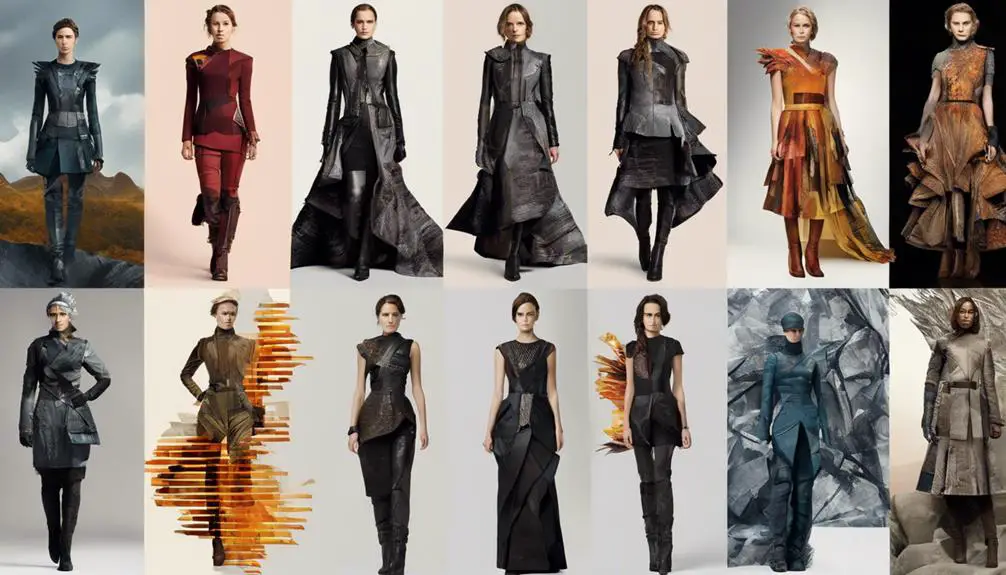
Visual aesthetics in "The Hunger Games" series starkly illustrate the profound socioeconomic divides within Panem. Through expert costume design, the filmmakers capture the stark contrasts between the opulence of the Capitol and the drabness of the Districts. In District 12, you'll notice the cool color palette that emphasizes despair and poverty, while the Capitol dazzles with bright colors and extravagant accessories, symbolizing wealth and excess. This visual storytelling powerfully reflects the themes of inequality and struggle.
Characters like Effie Trinket embody the Capitol's obsession with fashion. Her wardrobe evolves from flamboyant to more relatable attire, mirroring not just her personal growth but also the shifting political climate throughout the series. In "Catching Fire," the costume design draws inspiration from 1950s coal mining aesthetics, offering a historical context that deepens your understanding of District 12's struggles.
Then there's Lucy Gray Baird, whose vibrant rainbow dress in "The Ballad of Songbirds and Snakes" isn't just visually striking; it also serves a purpose in action sequences, blending thematic elements of rebellion with character development. The costumes in "The Hunger Games" aren't just clothes; they're essential parts of the narrative that enhance the overall experience. They invite you to reflect on the characters' journeys and the stark realities of their world, making each outfit a significant piece of visual storytelling that resonates beyond the screen.
Memorable Capitol Fashion
Capitol fashion stands out as a vivid representation of the opulence and excess that define its citizens. You can't help but be captivated by the extravagant costumes that embody the flamboyant spirit of the Capitol. A prime example is Effie Trinket, whose outfits showcase bold colors and elaborate accessories that are nothing short of eye-catching. One of her most memorable ensembles is the butterfly dress, made of hand-painted feathers, featured in "Catching Fire." This stunning piece captures the heart of Capitol fashion, which often blends historical styles with futuristic elements.
Then there's Cinna, Katniss's stylist, who brilliantly uses fashion as a storytelling tool. His creations, like the iconic "Girl on Fire" dress, symbolize rebellion and create a lasting impact on the audience. Each outfit serves a purpose, enhancing the narrative while highlighting Katniss's journey.
The vibrant clothing worn by Capitol citizens starkly contrasts with the muted, utilitarian attire of the Districts, emphasizing the socio-economic divides within Panem. As the characters participate in the Victory Tour, their glamorous outfits reinforce themes of consumerism and detachment from reality. This critique of modern societal values is woven seamlessly into the fabric of Capitol fashion, making it not just a visual spectacle but a powerful commentary on the world of "The Hunger Games." Fundamentally, Capitol fashion is a dazzling display of excess that invites you to examine the deeper meanings behind the costumes.
Frequently Asked Questions
What Clothes Did They Wear in the Hunger Games?
In the arena, you'll notice Katniss' wardrobe reflects survival, while Peeta's style showcases charm. Their tribute costumes embody Capitol trends, and Mockingjay symbolism emerges in District fashion, revealing deeper themes of rebellion and identity.
Why Do They Dress so Weird in the Hunger Games?
In a world where extravagance overshadows reality, their bizarre clothing serves as fashion symbolism. You see cultural commentary and dystopian aesthetics that reveal character identity, societal critique, and thematic expression through striking visual storytelling.
Who Designed the Outfits in Hunger Games?
The outfits in the series showcase costume designer insights, highlighting character outfit evolution and symbolism in outfits. You'll see fashion trends analysis, color significance, and practical outfits critique reflecting cultural influences on design throughout the narrative.
Why Do the People in the Capitol Dress Like That?
You'll find Capitol fashion's outrageousness reflects wealth disparity and societal commentary. As trends evolve, they symbolize character representation and cultural influence, showcasing the disconnect between lavish lives and the struggles faced outside their extravagant bubble.
